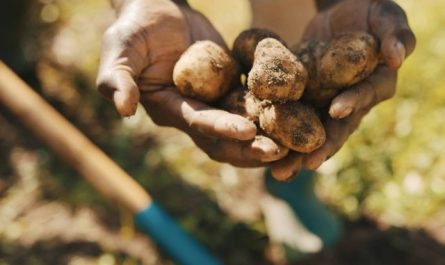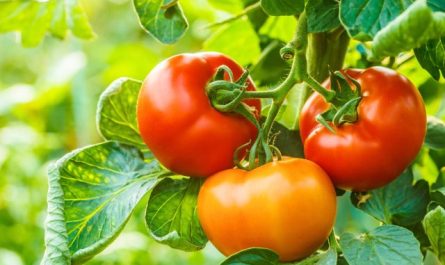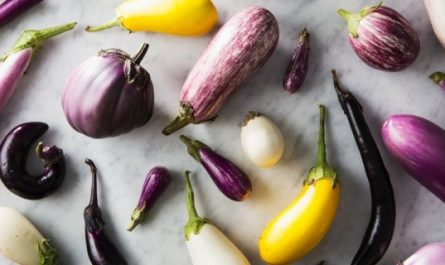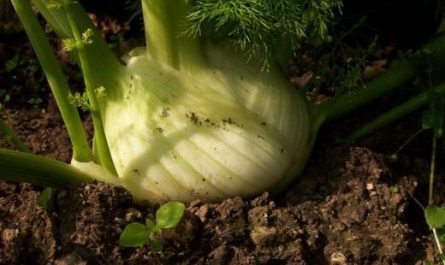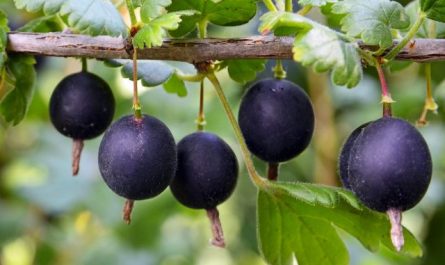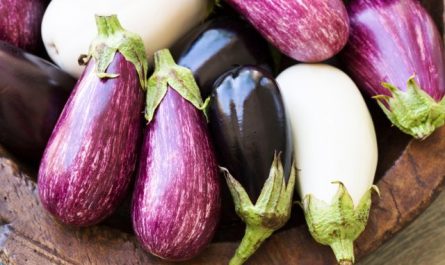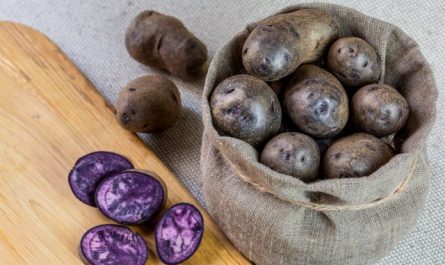Phosphorus is one of the most important elements for plant organisms. Many unfairly give it third place in importance, but this is not entirely true. In fact, this element is no less important than nitrogen and potassium, it participates in various exchange reactions and supplies energy to plants. Phosphorus belongs to the structural elements of DNA and RNA, and is also included in the composition of various other substances necessary for the full existence of life. Considering this, phosphorus can be put on a par with nitrogen and potassium, without it, the full development of a plant organism is impossible.

If we talk specifically about phosphorus fertilizers, answering the question “what is it?”, the answer will be as follows: these are fertilizers classified as minerals and salts. Depending on the crop being grown, different amounts of these fertilizers are required.
If there is enough phosphorus in the soil, then the plants will fully develop, bloom, and bear fruit. Interestingly, excess phosphorus in the soil is rarely observed, but even if it is, there is practically no harm from it. The whole point is that phosphorus is considered a passive element that plants can consume from the soil in the amount they need.
Why are phosphorus fertilizers important?
The introduction of phosphorus fertilizers, ensuring the sufficiency of this element in the soil, will guarantee the stable development of plants, increase their immunity, and improve their appearance. If you ignore the introduction of phosphorus into the soil, then the main blow will be on the reproductive organs of plants, which will actually stop functioning, and, consequently, this will negatively affect reproduction. With an extreme deficiency of phosphorus, plants are completely lacking seeds, melons and gourds stop growing vines, leaf blades, and often plants shed some or even all of their leaves. Grain crops do not yield a harvest, becoming ordinary grasses, and so on.
Of course, the effect of phosphorus fertilizers, or rather the degree of expression of this effect, will largely depend on the type of soil. Do not forget also that phosphorus is more effective in tandem with nitrogen. With sufficient phosphorus and nitrogen in the soil, especially if it is black soil, plant roots grow better and faster, they spread more actively in the soil, which increases their drought resistance and reduces the need for frequent watering.
If your plot has forest soils, you should definitely use phosphorus fertilizers in combination with nitrogen fertilizers. Otherwise, if there is a nitrogen deficiency in the soil, phosphorus starvation will occur, even if there is enough phosphorus in the soil. In addition to forest soils, it is also useful to apply nitrogen in combination with phosphorus to “tired” soils, low-fertility soils, and those with increased acidity.

How are phosphorus fertilizers produced?
The production of fertilizers containing phosphorus includes a number of different types of processing. As is known, such fertilizers contain phosphate ore products and other compounds. The processing process itself consists of separating various compounds from this ore. The technology itself consists of grinding the ore to a powder form, enriching it with various acids, such as phosphoric acid. Then comes phosphate reduction, and ultimately, heat treatment. As a result, a variety of fertilizers containing phosphorus are obtained, which, based on their properties, are divided into a number of categories.
Categories of phosphorus fertilizers
First category — are phosphorus fertilizers soluble in water. This group includes superphosphate, double superphosphate, and superphos. These fertilizers perfectly stimulate root growth and help strengthen them.
Second category — these are citrate- and lemon-soluble phosphorus fertilizers. This group includes bone meal, percipitate, and thermophosphate. These fertilizers are especially effective before sowing seeds of various plants. Fertilizers are good for enriching the soil with phosphorus when it is lacking.
Third category — these are poorly soluble fertilizers. This group includes such fertilizers as ammophos, diammonium phosphate, phosphate rock, and vivianite. These fertilizers can interact with nitric and sulfuric acids, but they do not interact with weaker acids.
Let’s talk about these fertilizers in more detail and start with the group of water-soluble ones.
Water-soluble phosphorus fertilizers
Superphosphate
In first place and on everyone’s lips is superphosphate. Superphosphate contains a number of substances – monocalcium phosphate, phosphoric acid, as well as magnesium and sulfur. In appearance, superphosphate is a granulated powder. Superphosphate is used for a wide variety of soil types, often regardless of what crops grow on them. It can be used both dry and dissolved; both in pure form and in combination with other fertilizers. The introduction of superphosphate strengthens the immunity of plants, resulting in increased yields, resistance to a whole range of diseases and pests, as well as low temperatures.
Tomatoes are the most responsive to superphosphate fertilization. When this fertilizer is applied, their growth accelerates, flowering improves, and fruit set increases.
Superphosphate can be added during planting – into planting holes, pits, in a dosage of 12-13 to 19-21 g per plant. On poor soils, for faster phosphorus intake by plants, it is necessary to add this fertilizer dissolved in water. It is advisable to water the soil around tomato bushes with this fertilizer during their flowering period.
Typically, the application rate is 100 g per bucket of water, with about 0,5 liters poured under each plant.
Double superphosphate – this fertilizer contains about 51% phosphorus in concentrated form. Double superphosphate is usually used as a top dressing in the fall. It is often added during soil digging in small quantities – only 8-10 g of fertilizer is needed per square meter. On poor soils, in addition to autumn application, top dressing can be done in the spring, having previously dissolved the fertilizer in water (10 g per liter, liter per square meter).
Double superphosphate is almost the most expensive phosphorus fertilizer, but its application rates are small, so savings are observed. Most often, double superphosphate is used to feed trees and shrubs.
The dosage of this fertilizer depends on the crop it is applied to. Thus, any variety of currant requires 45-55 g of fertilizer, raspberry 18-22 g, gooseberry 35-45 g, stone fruit crops 65-75 g. At the same time, adult trees of pome and stone fruit crops older than seven years require the application of about 150-180 g of fertilizer, and young trees (up to three years) – about 65-75 g. Vegetable crops are usually fertilized immediately after planting, about 18-21 g of fertilizer can be applied per square meter.
Superphos
This fertilizer is granules, which contain approximately 41% phosphorus. The fertilizer is especially effective for vegetable and flower crops, but can also be used for other types of plants.

Sparingly soluble phosphorus fertilizers
Ammophos
In the first place here is ammophos, this fertilizer is obtained by neutralizing orthophosphoric acid with the participation of ammonia in the process. As a result, the main amount of fertilizer is phosphorus (more than 50%), nitrogen in the fertilizer is minimal (10-12%), however, thanks to even this small amount, the assimilation of phosphorus by plants increases.
Cucumbers respond best to ammophos fertilizing; after applying fertilizers, their resistance to negative environmental factors increases. Considering the absence of chlorine in this fertilizer, to which cucumbers react negatively, they will not suffer from chlorosis and powdery mildew. In addition, ammophos does not contain nitrate compounds, therefore, it is even more in demand among gardeners.
Ammophos is usually applied in the fall and combined with soil digging, but the fertilizer can also be used quite effectively during planting (into holes, planting pits, etc.). If urgently needed, this fertilizer can be used at any stage of plant development.
For vegetable crops, ammophos is applied in the amount of 23-28 g per square meter, for large flowers, such as roses or peonies, up to 25 g per square meter can be applied, for small flowers (night violet and the like) approximately 6-8 g per square meter. You can fertilize the lawn by applying 17-19 g per square meter, and fruit trees require about 22-24 g per square meter.
Diammophos
The second name of this fertilizer is ammonium hydrophosphate. This fertilizer is distinguished by the fact that it can improve the nutritional properties of the soil and at the same time reduce its acidity. This fertilizer contains more than 50% phosphorus, and it combines well with any organic fertilizers. For example, a mixture of diammonium phosphate and bird droppings is considered a good fertilizer, but this fertilizer must be dissolved 12-14 times, insisting it for 4-5 days.
You can use diammophos for any plants. For example, during the planting of potatoes, you can pour a teaspoon of this fertilizer into each hole.
Considering the presence of ammonium hydrophosphate in the composition, plants can be fed both before planting in the ground and during the flowering period. Liquid fertilizers are also often used, and you can either water the plants at the root or water them on the leaf blades, that is, as foliar feeding.
Do not forget that when applying liquid fertilizers, it is necessary to distribute the fertilizer evenly over the soil surface so that the fertilizer does not accumulate in one place.
Phosphoric flour
In appearance, this fertilizer is a brown or gray powder. The advantage of phosphate flour is its non-hygroscopicity, therefore, it can be stored in a variety of places, in addition, the fertilizer is odorless. This fertilizer interacts well with mineral acids, the result of which are hydrophosphates.
This fertilizer contains up to 32% phosphorus in the form of orthophosphate.
Phosphorite flour is usually used as a basic fertilizer, which is applied in the fall. The highest efficiency from the application of this fertilizer is shown on leached chernozems, as well as on gray forest soils, podzolic and swampy.
Phosphorite flour can be mixed with other fertilizers. It is often used to create composts based on peat, manure and is used as a neutralizer for fertilizers that are highly acidic.
During its storage, phosphate flour does not cake, it is a clean, ecologically safe and quite cheap fertilizer. This fertilizer has only one drawback: when poured and scattered, it produces a lot of dust.
Vivianite
This fertilizer is obtained from iron ore mined in swamps. The fertilizer has the appearance of a grayish-bluish or blue powder. The fertilizer contains about 30% phosphorus, sometimes a little less. Vivianite can be sold as purer, or with peat impurities, the so-called peat vivianite, in this form it contains from 13 to 21% phosphorus. Vivianite is the same phosphorite flour in its action and properties.

Citrate and lemon soluble phosphorus fertilizers
Bone flour
This fertilizer is obtained from organic matter by grinding the bone tissue of farm animals. The fertilizer contains up to 62% phosphorus. This fertilizer is environmentally friendly and does not contain any harmful impurities.
Bone meal can be safely used for fertilizing a wide variety of crops. This fertilizer is especially often used to provide phosphorus to potatoes, tomatoes, and cucumber plants. House flowers and tropical plants also need bone meal fertilizing, and various palm trees, vines, and ficuses respond especially well to such fertilizing. For indoor plants, you need to dilute three teaspoons of bone meal in a liter of water; this amount is enough for a ten-liter pot.
Precipitate
Externally, this fertilizer is a whitish-gray or light-gray powder. This fertilizer can contain from 24-26 to 29-31% phosphorus. This fertilizer is suitable for any type of soil and for a wide variety of plants. The precipitate can be used both for the introduction of basic doses of fertilizers and for ordinary feeding.
In terms of efficiency, this fertilizer is not inferior even to superphosphate, and when applied to acidic soil, it can be even more effective in terms of normalizing pH levels.
Thermophosphate
In thermal phosphate, phosphorus can be from 13-15 to 29-31% depending on its type. There are three types of thermal phosphate: open-hearth slag, defluorinated phosphate, and Thomas slag.
The smallest amount of phosphorus — 13-15% — is found in Thomas slag. It is produced by processing iron ore. Thomas slag belongs to the category of alkaline fertilizers, which is why it is most effective on soils with high acidity. However, it can be used on virtually any type of soil. The best effect from applying this fertilizer is achieved by thoroughly mixing it with the soil.
Open-hearth slag or phosphoslag contains more phosphorus – up to 16%. This fertilizer is also highly alkaline and is simply irreplaceable on soils with high acidity.
Defluorinated phosphate contains approximately twice as much phosphorus (up to 32%). It is as effective as superphosphate on chernozem soils.

Phosphorus from compost
As is known, plants contain many components, including phosphorus, however, the vast majority of plants do not contain much phosphorus, but there are those that contain quite a lot of it. For example, rowan berries contain up to 1,1% phosphorus, the vegetative mass of wormwood is about 1,2%, hawthorn fruits are about 1,3%, the vegetative mass of feather grass is about 1%, and the vegetative mass of creeping thyme is about 0,8%. Knowing this, you can use compost from these herbs and fruits to create a good and completely safe phosphorus fertilizer for both plants and the environment.
What happens to plants when there is a lack of phosphorus
Most often, the vegetative mass of most plants changes its usual shade to dark green, and as the situation worsens, to purple-crimson. The shape of the leaf blade itself changes, dark spots appear on the leaves, after which the leaves often fall off much earlier than expected. With a strong deficiency of phosphorus in the soil, plants are small, underdeveloped, trees literally turn into bushes. The root system of plants develops very poorly.
Causes of Phosphorus Deficiency
It often happens that the soil seems to have enough phosphorus, but it is in a practically non-digestible form. This happens in soils where machinery, herbicides, insecticides and other chemicals are actively used, where the soil is virtually devoid of microflora. Phosphorus is poorly absorbed when the soil is not cultivated correctly, when potassium and nitrogen fertilizers are applied in excess, or when only occasional fertilizing is done that is not regular.
Correct application of phosphorus fertilizers
Usually, the main time for applying phosphorus fertilizers is autumn. These fertilizers are applied by digging the soil, and it is advisable to thoroughly mix them with the soil. Naturally, no one forbids applying these fertilizers to the soil in spring and summer, and at this time of year, it will be more effective to apply fertilizers dissolved in water, rather than dry ones.





